
Whether you want to keep visitors or animals out of your garden or have a pet that wanders about when it’s off-leash, a fence is a terrific method to restrict your property and keep your pet contained. You also have a number of alternatives for fence design. Horizontal fencing provides a one-of-a-kind look if you want to stand out on your block.
Horizontal Fencing Designs
These are some of the most common horizontal fencing designs.
1. Horizontal Slat Fence
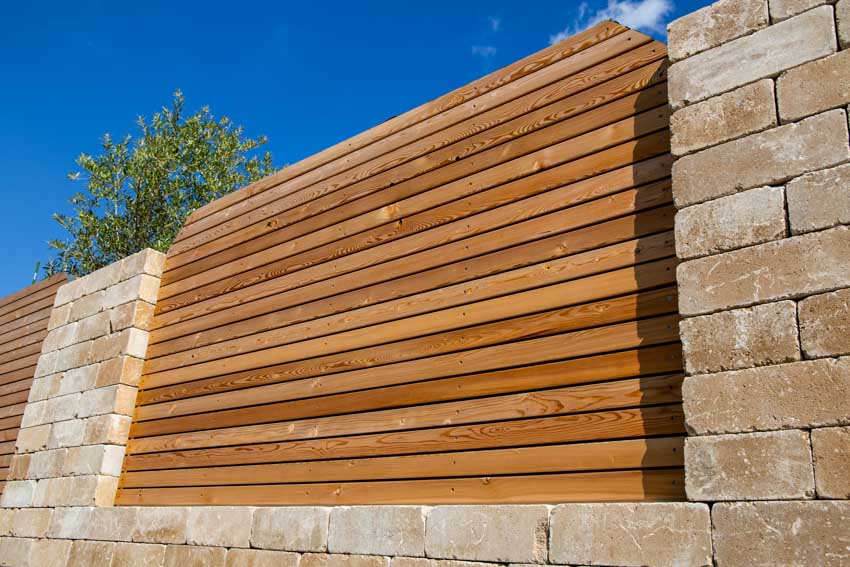
A straight slat boundary is often referred to as the plainest and most uncomplicated horizontal fence type. Instead of being fastened vertically, the planks are laid horizontally across the posts. You may stack them like panels for a picket fence or arrange them side by side to create a basic pattern.
Even though there is indeed a wide variety of designs for flat fences, at its most fundamental level, the term “horizontal slat fence” may refer to any boundary with slats that run horizontally. If you desire greater privacy or something a little weirder and more distinctive, those alternatives are also accessible. A straight slat fence may also be installed with a number of materials. Whether you choose wood, vinyl, composite, or even metal, your choice can change how your boundary looks and works.
2. Horizontal Fence Panels
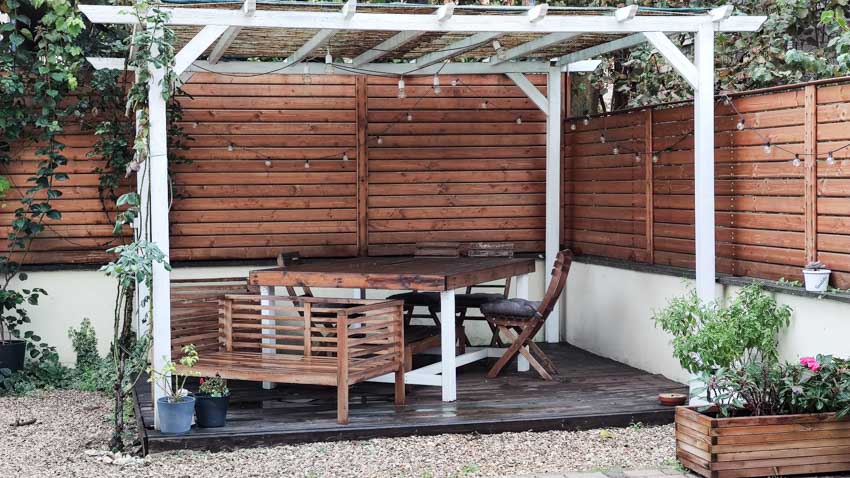
Fence panels are pre-built sections of the fence. This makes installing the fence when you’re ready simpler. After all, we’ve already built the panels. It’s basically up to you to put them up and secure them in place. This is most frequent with vertical boundary panels. They typically have a fenced area measured from post to post. Yet, it is not a practice that is limited to vertical fencing. Fencing panels for the straight fence are also available. These boundary panels, however, are less prevalent than their vertical counterparts.
Flat fence ideas with panels are available in a variety of forms and styles, so you can choose something to match your design aesthetic. If you choose boundary panels, you are not confined to the fundamentals. Again, you will likely find fewer prefabricated straight fence panels than vertical ones.
3. Modern Horizontal Fence

Horizontal fence concepts, in general, are often commended for their contemporary charm. This is due in part to the tradition connected with a vertical fence. It has long been the most popular kind of fence. In more recent times, we’ve begun to use the straight fence. The straight boundary is available in various materials other than metal and wood, including vinyl and composite fencing.
Yet, this doesn’t mean that flat boundary is just appealing to individuals who like contemporary décor and style; rather, using neutral colors and clean lines can help you achieve the modern aesthetic you want. To create a contemporary straight fence, you may also use staggered planks or a shadow box approach.
4. Horizontal Privacy Fence
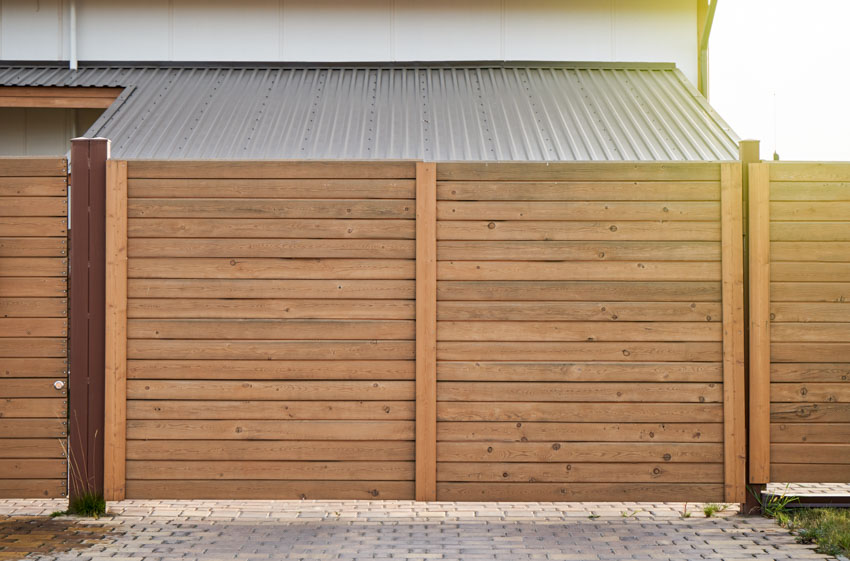
When you want to spend more time in your garden, privacy walls are a terrific addition. They also provide all of the additional advantages of a fence, and their tall styles are ideal for keeping dogs in your garden, for example. A privacy fence normally has a minimum height of six feet and blocks most of the light from either side. This is ideal for preventing someone from seeing through the barrier to the other side. If they feel that more than a privacy boundary that is six feet tall is needed, some homeowners choose to add a foot or two to its height.
Several straight boundary options are well suited to the design. It is simple to block off images using flat paneling when correctly positioned. Certain designs, such as the shadow box design, have been shown to operate better with straight barriers than vertical fences.
5. Staggered Horizontal Fence
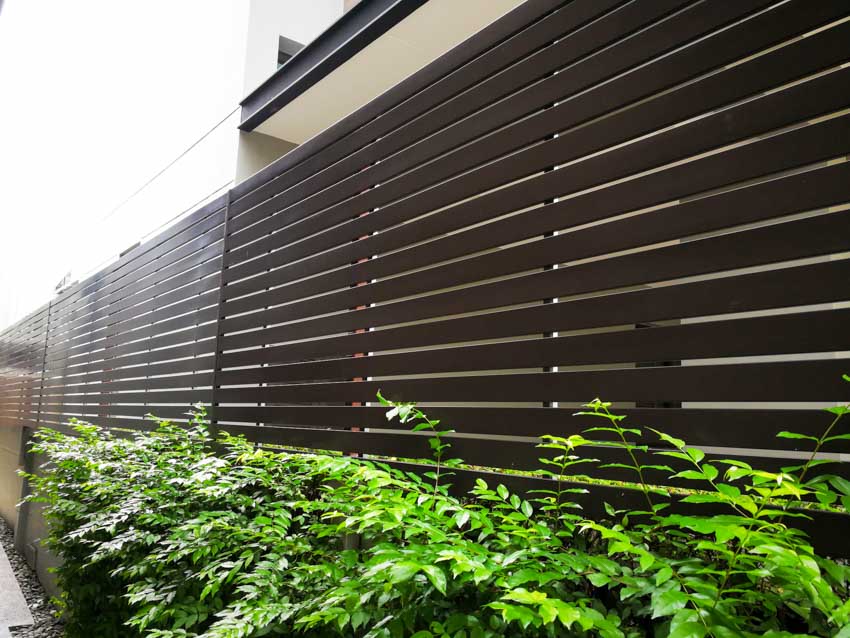
Several staggered straight fence concepts use panels that do not line up properly in one way or another or are staggered, as the name implies. Staggered fences may also include panels that alternate which side faces outward; however, this style is often known as a shadow box fence.
You may also be creative with how you construct your staggered fence. If you want some seclusion, stagger your boards but keep them close together. They can still filter out the views on the other side of the barrier this way. One alternative is to use your imagination and build a straight boundary with staggered boards, which serves more as an artistic statement than a practical barrier. The basic rule of thumb is to keep your panels tight to build a staggered horizontal boundary that provides additional protection and seclusion.
6. Horizontal Shadow Box Fence
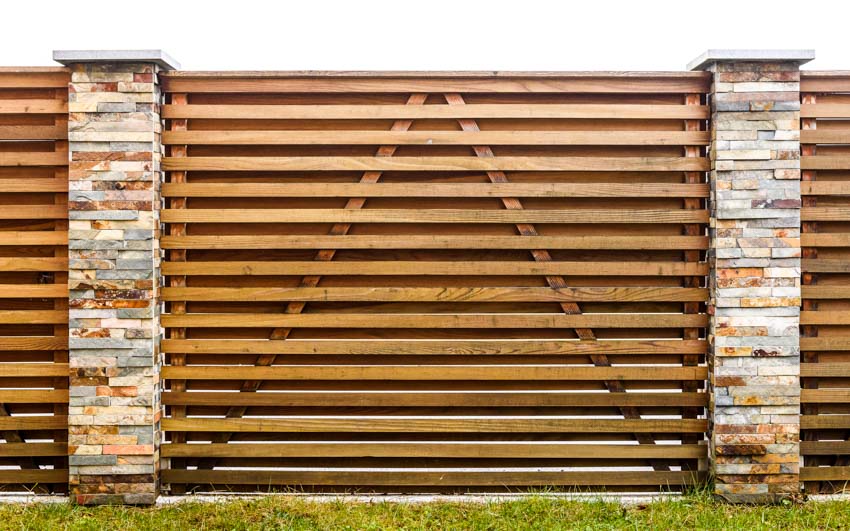
If you want to get all along with your neighbors, horizontal shadow box fences are a great choice. After all, they are often called “good neighbor” fences because how they are made ensures that both sides of the fence look nice. This is because not all of the straight planks are attached to the posts in the same manner. Rather, the pattern alternates, with each new board exchanging sides of the fence.
Since the panels on either side aren’t completely aligned edge-to-edge, this effect is more noticeable. Another advantage of this design is that it provides greater privacy than a similar pattern on a straight fence. This is because although it is possible to look through the slats if you tilt your head in a certain direction, it is far more difficult to do so when the slats are aligned horizontally.
Horizontal Fence Materials
Here we will discuss the many materials that may be utilized for these straight boundary concepts.
7. Wooden Horizontal Fence
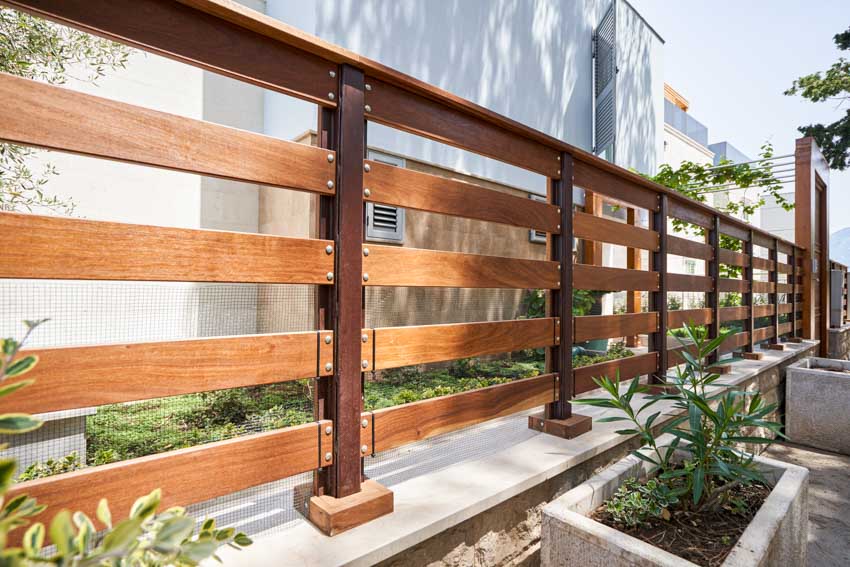
First, it’s important to note that wooden fences may differ substantially depending on the wood used. However, this provides you with a wide range of options in terms of advantages, drawbacks, and aesthetics. Nonetheless, using wood for straight fences has some basic advantages and disadvantages.
For one thing, wood is widely accessible, and although prices vary depending on the kind of wood, there are many low-cost possibilities. Some cedar fences will be much less expensive than white oak fences. Another advantage of this variation is that you may choose a wood type according to your tastes and budget.
Of course, the wood boundary has its disadvantages. For example, although certain species of wood may be resistant to pests, they are often more sensitive to humidity and temperature, leaving them more prone to splitting or warping. Nevertheless, giving enough room during installation might assist in mitigating these impacts.
8. Metal Horizontal Fencing
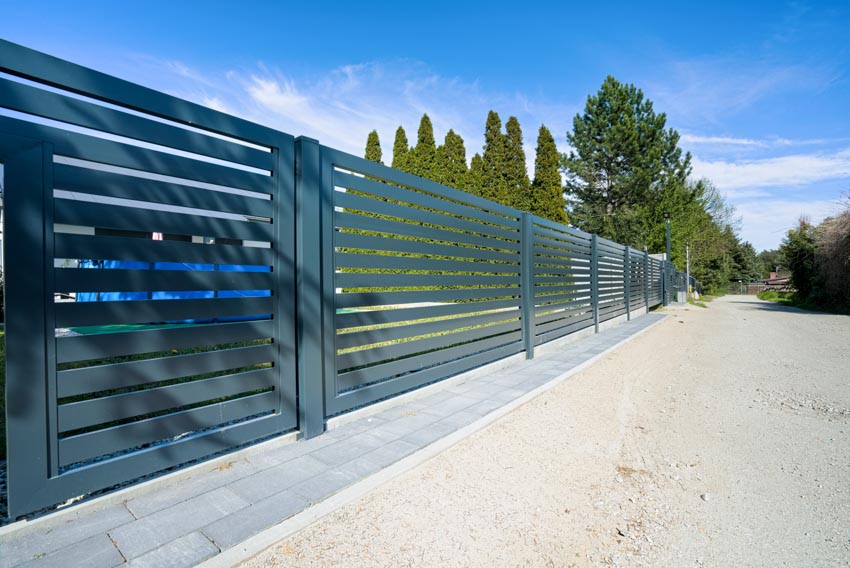
When employing metal in your horizontal fence, you have a few alternatives. Let’s start with a straight aluminum fence. This fence style offers many advantages, including longevity and low maintenance requirements. Yet, since aluminum is a malleable metal, it has reduced durability. Although vertical aluminum fences seldom provide much seclusion, straight fences employ larger panels that provide greater coverage. An aluminum fence typically costs between $7 and $32 per foot of material.
Straight corrugated metal fences are another possibility. Corrugated metal is galvanized, curved sheet metal that is a long-lasting and environmentally friendly option for landscaping. Its design may also assist in draining water away from your garden, benefiting you while needing minimum care. Corrugated metal fences, on the other hand, aren’t as flexible when it comes to how they look, and they can make your yard sound like it has an echo. A corrugated metal boundary typically costs between $10 and $12 per linear foot.
9. Composite Horizontal Fencing
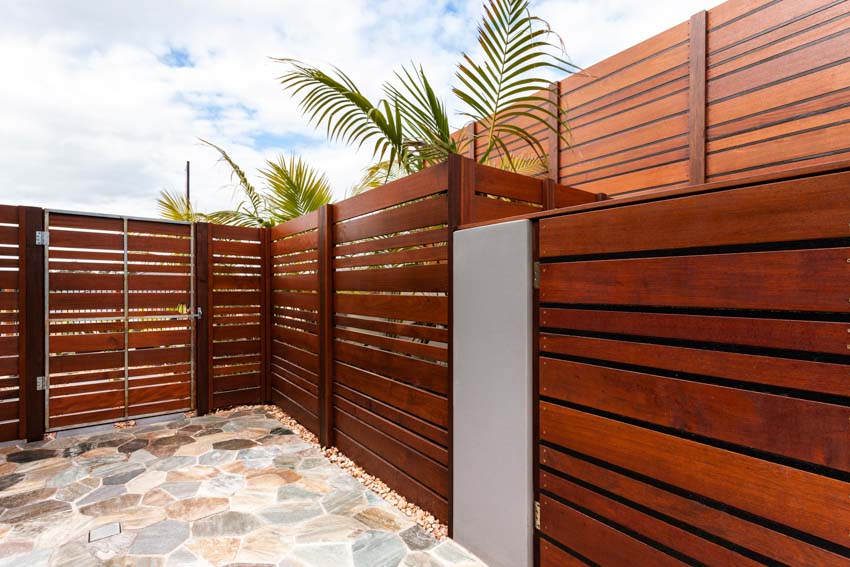
As the name implies, composite fences are composed of a combination of materials, often a mix of plastic and wood. This strategy is intended to be more environmentally friendly, and it has a number of distinct advantages. For one thing, upkeep is simple – you can get away with just washing it with water when it seems to be dirty. You may also depend on the composite fence to withstand a variety of frequent issue accelerators, such as UV radiation, environment, mildew, and insects.
Nevertheless, composite fencing is more expensive than typical wood fences. Expect to pay about $25 per foot on average, although prices might vary based on your pick. The good news is that this is the main downside of composite fencing; apart from the higher initial cost, the material has few operating problems.
10. Vinyl Horizontal Fencing

Vinyl has a distinctive appearance. Keeping clean is rather simple and only needs a little time to maintain. You won’t have to bother about restraining or repainting the vinyl fence. You won’t have to worry about bugs or water damage either. It’s also a rather simple material to install. Yet, there are several disadvantages to using vinyl. For one thing, some homeowners dislike the artificial aspect of vinyl when contrasted to a more natural choice like wood. Another source of worry is damage.
Although vinyl is durable and resistant to water, it may be damaged by high heat. This may be a concern since vinyl is extremely difficult to repair, despite being a robust option for straight boundary materials in general. A vinyl boundary does have a greater initial cost due to its longevity. Based on the vinyl and boundary style, you should pay between $15 and $30 on average.


